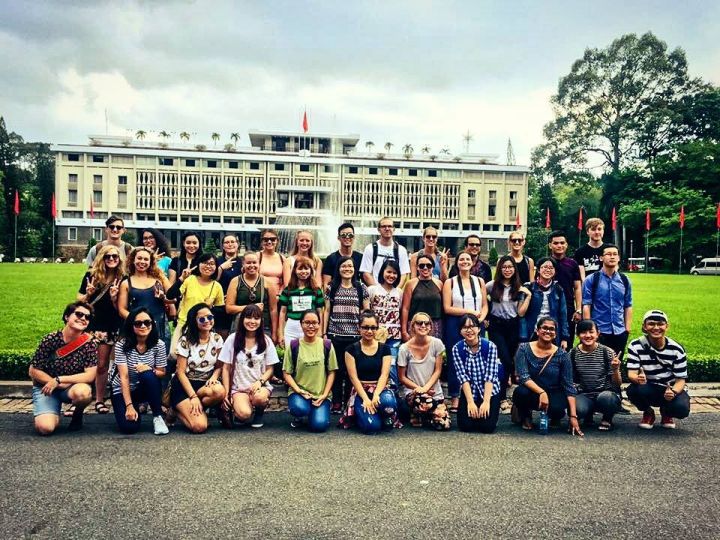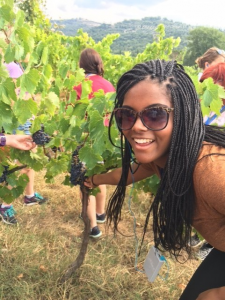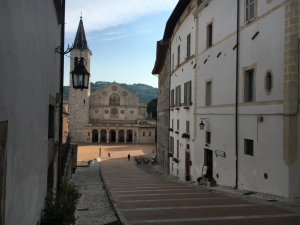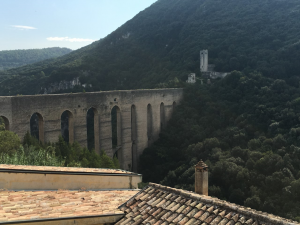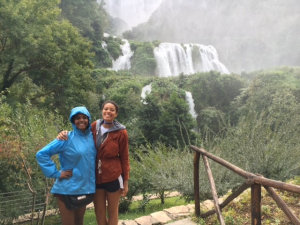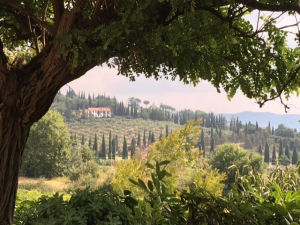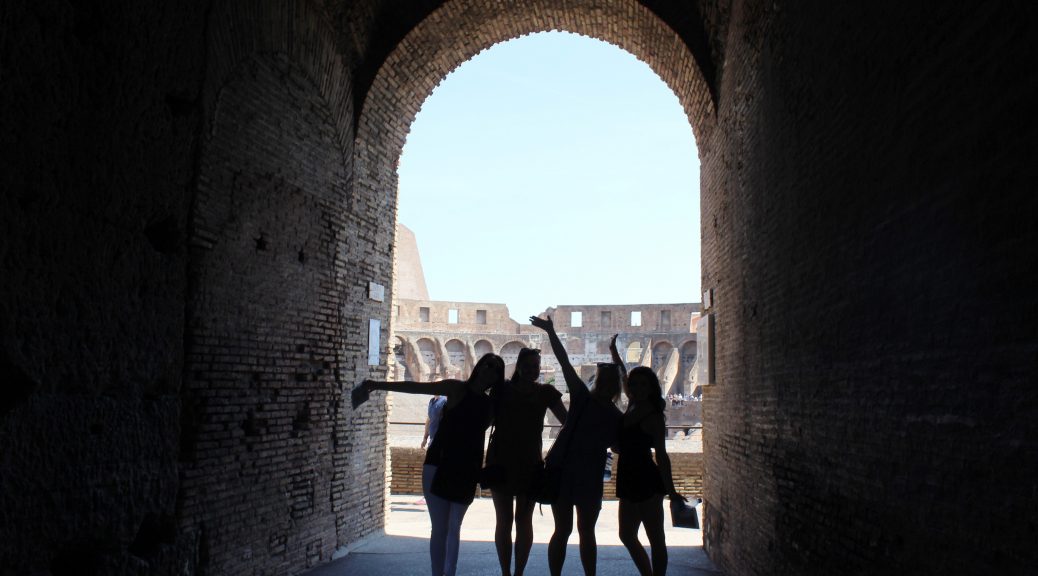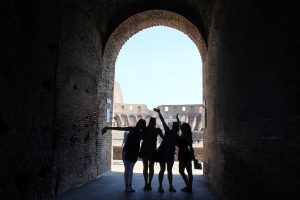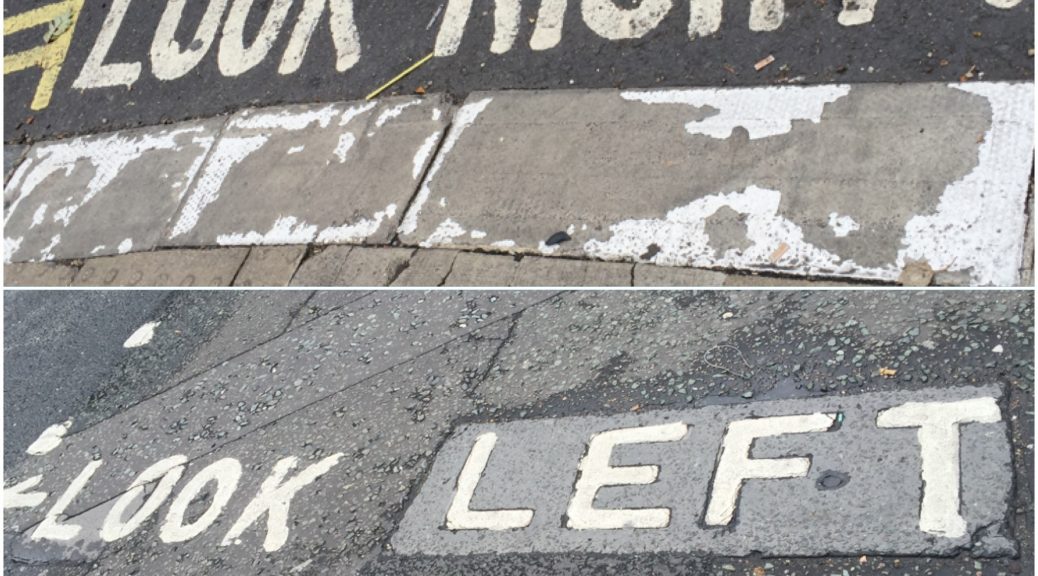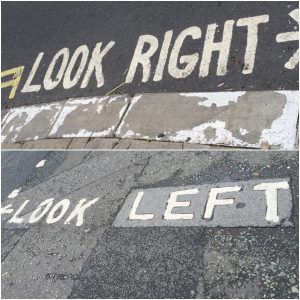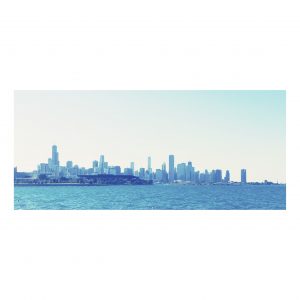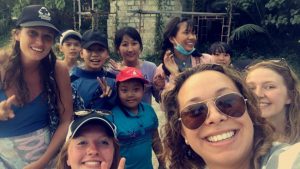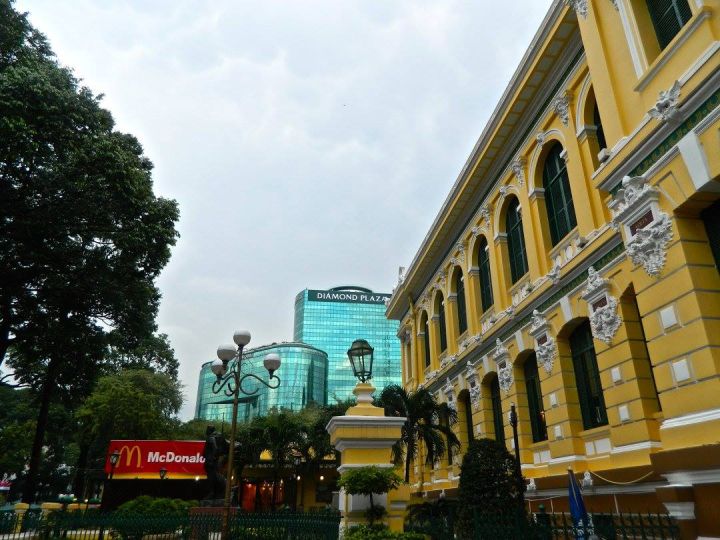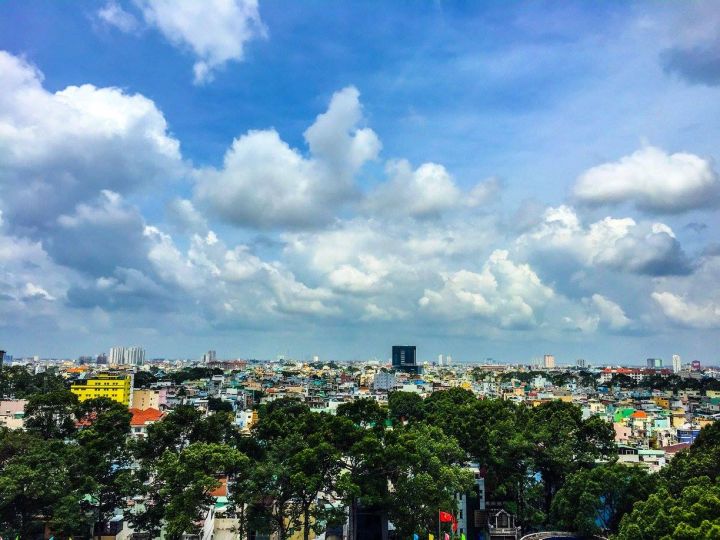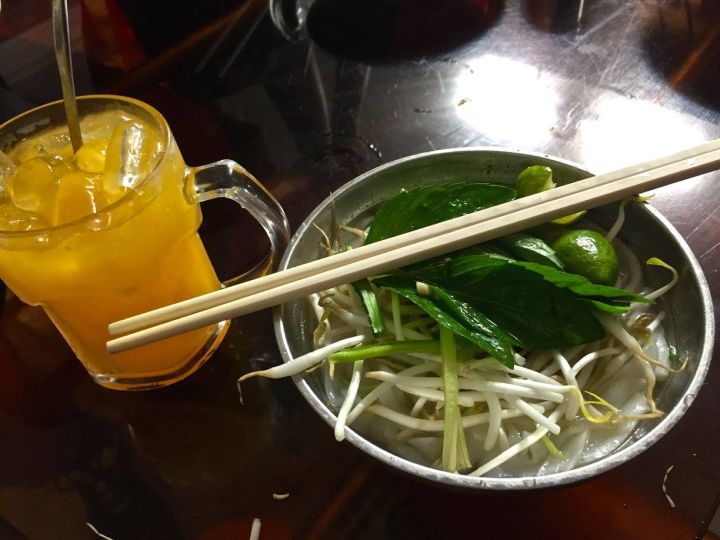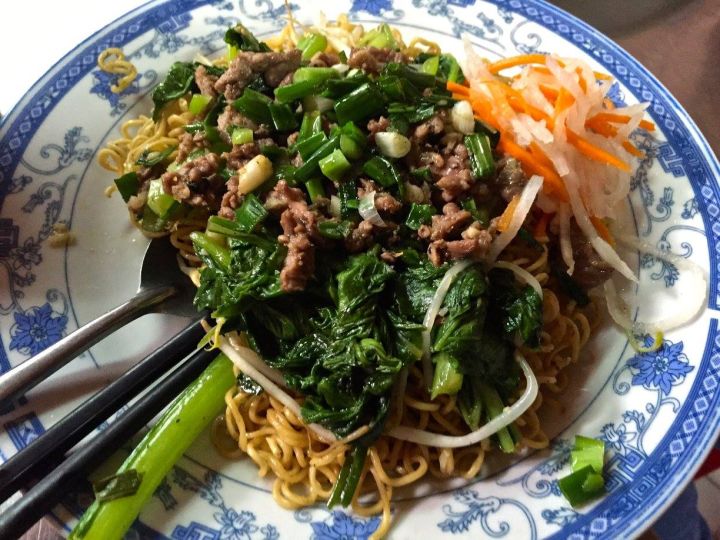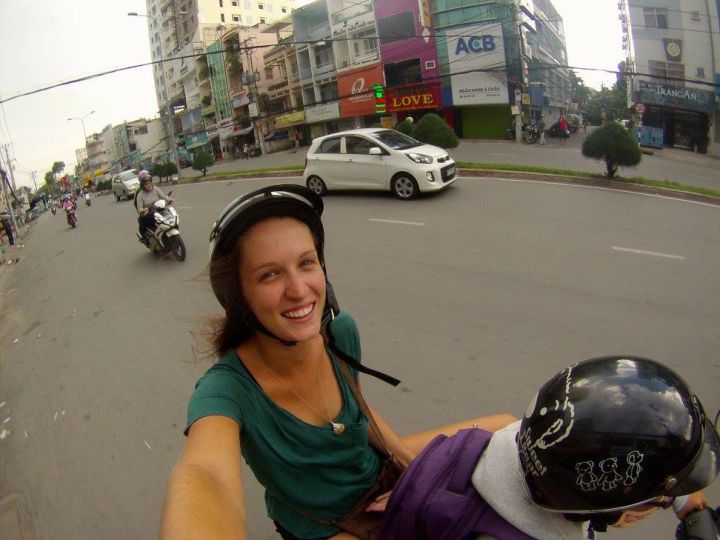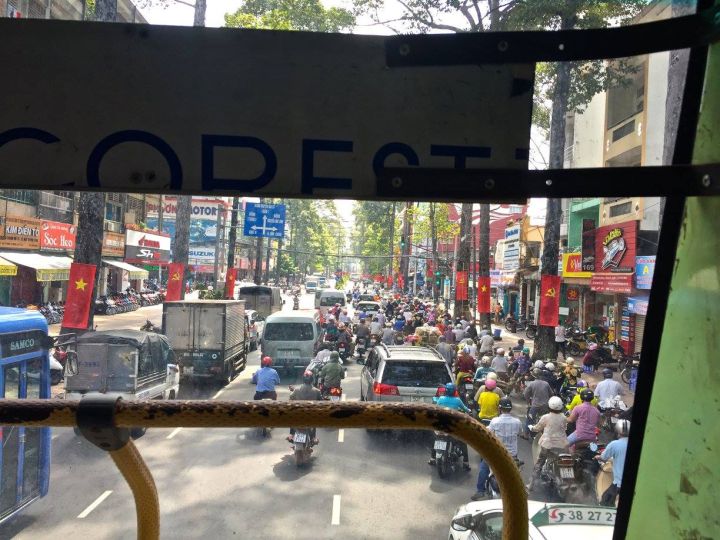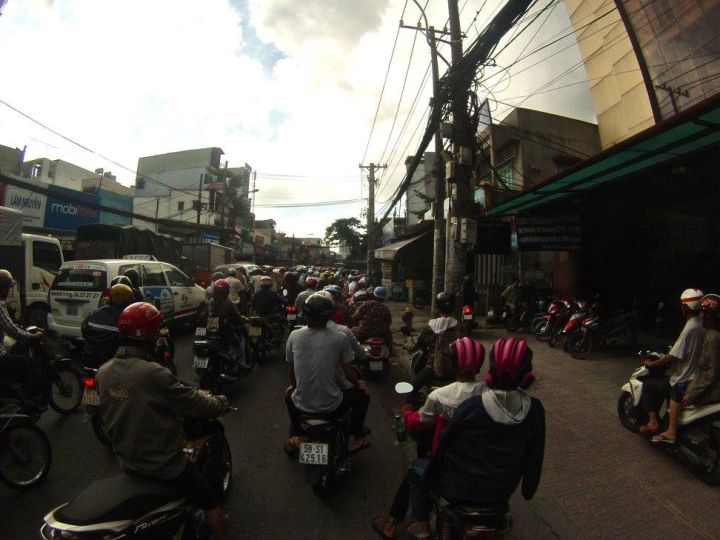Ho Chi Minh City, or Saigon, is a sensory overload in the best way. From the moment you step outside you are bombarded with smells, and sounds, and images that are a display of the colorful Vietnamese culture, and the growing commercial society that is extremely apparent in the city. Everywhere you look, someone is selling something from street food, to electronics, to clothing, to knick knacks, to anything your heart may desire. Oh and coffee, lots and lots of coffee. In fact, there is at least one coffee shop on every block.
This week has been one hell of a ride, and so I will just touch on a few of the most notable parts of Saigon that are beginning to grab a hold of my heart.
The city: Ho Chi Minh City is made up of 12 districts, plus a few other districts that have names instead of numbers. The districts with numbers begin in the center of the city, and work their way outward. Because of this, District 1 and 3 are the more touristy districts, and also where most of the night life is. I am living in District 10 in the dorms of the Bach Khoa University which is the University of technology in HCMC. My classes however, are held at Open University in District 1. Loyola arranged this living situation so as to give us the chance to experience a more culturally legitimate image of Saigon, instead of us only being in the touristy areas. For all my Loyola people, I like to think of District 10 as the Rogers Park of Ho Chi Minh City. As far as going out and enjoying Saigon’s night life, restaurants, and also for our classes, we do have to travel about 15 to 20 minutes by bus, taxi, or motorbike, but in District 10, we have a lot more access to the Vietnamese people, and to much cheaper street food. I have yet to see a foreigner in District 10, but they are everywhere in Districts 1 and 3. In District 10 I am greeted with intrigued stares and often a hello! whereas in Districts 1 and 3, I am seen more as a walking ATM.
The architecture in Ho Chi Minh City is definitely a mix of old and new. Especially in the ritzier districts. There are a minimal amount of skyscrapers though, and so much of the city has a very crowded – boxes stacked upon boxes type of feel. Though it is illegal for street vendors to crowd the streets, this law is paid little heed (like many laws in Saigon), and most of the sidewalks are taken up by peddlers, or small tables accompanied by plastic chairs. This means that most pedestrians have to walk on the road (I will touch on this later in the traffic section of this post). There is also garbage everywhere. It seems that due to the continuing growth and development of the city and its economy, lessons on waste and garbage disposal are not a priority. After speaking to a few Vietnamese about this problem, the common thread of thought is that most people register it as a problem, but think that “someone else will take care of it.” The city also seems to be more preoccupied with development, than with maintaining beauty. I think that this is a commonality in most developing countries. Though the city is crowded, and very dirty, it is still beautiful in its own way, and it is hard not to be sucked into the excitement that perpetrates every corner of Ho Chi Minh City.
The first photo was taken in District 1 at the Central Post Office, designed by Gustaf Eiffel. The second was taken from the window of my bedroom in District 10.
The food: The number one thing that I have done since I got to Ho Chi Minh City is eat. Other than classes, our days basically revolve around our meals, and around trying new food. So far, I have found three and a half different forms of acquiring said food; western style restaurants, groceries (mainly cereal, fruit, instant ramen, and other snacks because we don’t have kitchens in our dorms), and street food. I say three and a half reasons because there is the street food such as bahn mi (Vietnamese sandwiches) that you just buy and eat on the go, and there is street food such as noodles, that you order, and eat while sitting in plastic chairs on the sidewalk. In the second case, you are served by the owner of the establishment and given ice tea on most occasions. All of the food that I have had so far in Vietnam has been amazing. The street food is by far the cheapest (usually ranging from the equivalent of $1 to $2 for a full meal), though it is very common to not be entirely sure what you are eating. I have found that as long as you go to places that the locals frequent and crowd, you will most likely be fine. Slowly, I am learning bits and pieces of the Vietnamese language, so ordering is becoming a little bit easier. Something I learned upon my arrival in Vietnam, is that Pho’ is actually not the most common meal in Vietnam. Though very easy to come by, it is mostly only eaten as a breakfast food, and so most street food sellers close down shop in the afternoon. You can get pho’ at all times though at regular restaurants. Most meals include rice or noodles with some sort of meat and veggies and sauce. District 1 has a much broader range of food choices for when you get tired of Vietnamese food. The other night, we went to Pizza Hut and it was glorious.
The coffee: The Vietnamese love coffee, and I love Vietnamese coffee. In Ho Chi Minh City, there is at least one coffee shop on every block, and they range from western style coffee shops with lots of indoor seating and AC to small hole in the wall coffee shops where you sit on the sidewalk in lawn chairs while you sip. Vietnamese coffee is thicker than western style coffee, and generally more sweet. It can be served hot or iced, and with or without condensed milk. Most shops also have a large array of what I would call “fancy coffees” meaning that they are flavored, or ice blended, or whatever. A cup of coffee generally costs about the equivalent of $1. If you get a fancy coffee, it will probably be about $2. I have yet to try anything but iced coffee due to the high temperatures outside, but I am sure that the hot stuff is just as good. The preparation of Vietnamese coffee came from the time of French colonization. Usually, coarsely ground beans are put through a french drip filter by being weighted down with a heavy lid and adding water. The coffee is then poured over ice (if served with ice). The use of condensed milk originated because the French were unable to easily acquire fresh milk. One famous strain of coffee in Vietnam is known as “weasel coffee”. This is because it comes from the poop of weasels who are fed coffee berries, and then digest it, producing this particular strain. Sounds gross, but it’s actually delicious. Honestly the only downside to Vietnamese coffee is that it comes in small portions, and is usually gone way to fast. 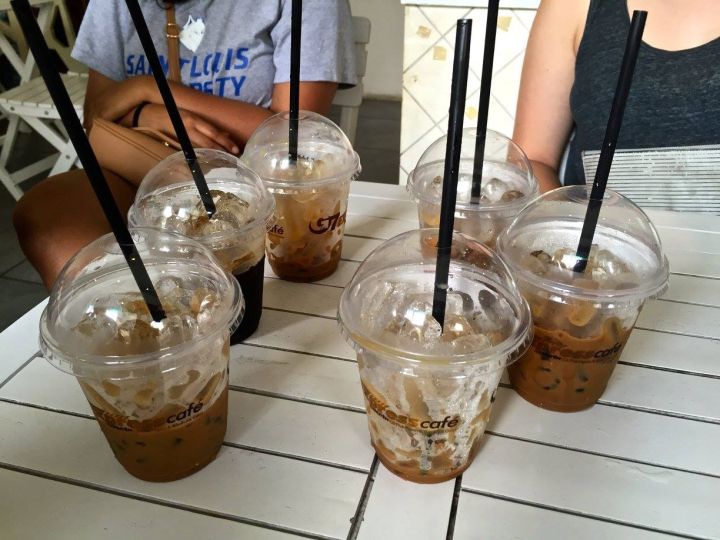
My cup is the one that is already sucked dry.
The traffic: The traffic here is insane. In-sane. Think Los Angeles, multiply that by ten, and then replace 98% of the cars with motorbikes. There are approximately 7.43 million motorbikes on the road in Ho Chi Minh City, and the population is 8 million. If Loyola allowed us to drive motorbikes during this program, I still would not drive in the city. Crossing the street in the city is an adventure unto itself, let alone manipulating the roadways on a vehicle. The Vietnamese drive offensively rather than defensively, and so no matter where you are on the road, there always seems to be a bike trying to creep in next to you, whether or not they are going the legal direction. The drivers of bikes also have no problem riding on the sidewalks, and often while walking I find myself jumping out of the way of someone coming right at me. The road laws in Vietnam honestly seem to be more like suggestions. If a cop pulls you over for misconduct, it only costs about the equivalent of $5 to pay them off. To add to the crazy driving habits, the Vietnamese have an incessant habit of honking their horns, even when nobody is in the way. To get a better grasp on the horn honking situation, I highly recommend reading this article; Honking In HCMC. Although the traffic is crazy though, there is nothing more exhilarating than riding on the back of someones bike, especially just around dusk. I always have said that the best way to see a city is to just walk it, but the best way to see Ho Chi Minh City is on the back of a motorbike.
The people: The Vietnamese are wonderful. They are some of the most open, helpful, and eager people that I have ever met. They love to laugh more than anyone I have ever met. Often it seems as though they are laughing at you, but I have learned that in no way do they mean to tease. They just laugh. I have been in many situations where I have had to ask for help, and they are always more than happy to go out of their way to fix whatever situation it is. It is refreshing that I have had to get used to this. 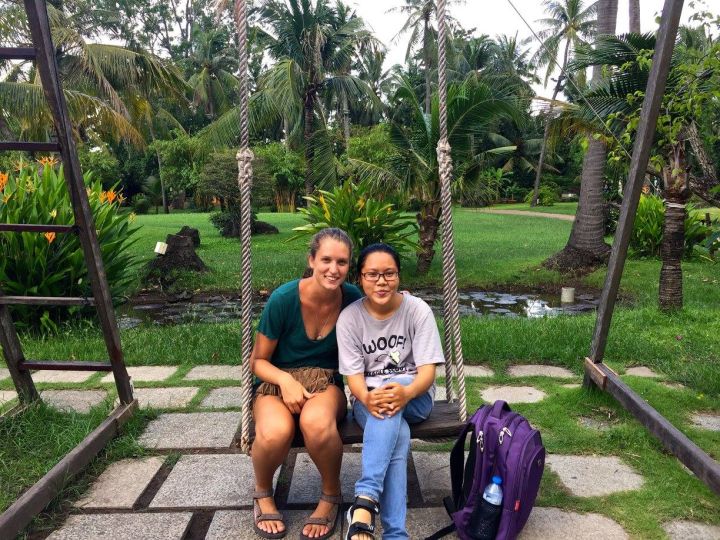
Me and my partner from Open University.
The language: Vietnamese is difficult. I am taking intensive vietnamese language and I am struggling. It is a tonal language which makes it almost impossible to say anything correctly. For example; my vietnamese teacher’s name means “Ruby” in english, but if you say it with the wrong tone, it means “stupid.” Pretty much every time that I have tried to speak the language outside of the classroom, the person I am talking to, has absolutely no idea what I am saying. Hopefully this gets easier.
Overall, I am falling in love with Vietnam, and cannot wait for all the experiences to come.
